Thirdera, a Cognizant company Elevated to Global...
We are excited to announce that Thirdera, a Cognizant company has been elevated to Global Elite status - the highest level of partnership recognition within the ServiceNow Partner...
Read MoreThirdera generates transformation, digitisation, and automation for our customers at the speed of NOW.
We help organisations adopt better patterns of work and get more from ServiceNow. Our team unlocks enterprise potential to elevate experiences across the world of work.
We help organisations adopt better patterns of work and get more from ServiceNow. Our team unlocks enterprise potential to elevate experiences across the world of work.
We help organisations adopt better patterns of work and get more from ServiceNow. Our team unlocks enterprise potential to elevate experiences across the world of work.
We help organisations adopt better patterns of work and get more from ServiceNow. Our team unlocks enterprise potential to elevate experiences across the world of work.
We help organisations adopt better patterns of work and get more from ServiceNow. Our team unlocks enterprise potential to elevate experiences across the world of work.
We help organisations adopt better patterns of work and get more from ServiceNow. Our team unlocks enterprise potential to elevate experiences across the world of work.
We help organisations adopt better patterns of work and get more from ServiceNow. Our team unlocks enterprise potential to elevate experiences across the world of work.
We help organisations adopt better patterns of work and get more from ServiceNow. Our team unlocks enterprise potential to elevate experiences across the world of work.

.jpg?width=500&height=276&name=filter%20group%20of%20people%20at%20desk%20laptop%20laughing%202021-10%20(1).jpg)


Insurance Provider Projects $75MM Gain in Business Value from Asset Management Transformation
Read more-1.jpeg?width=500&height=276&name=Indiana%20Department%20of%20Transportation%20Case%20Study%202023-03%20(3)-1.jpeg)
.jpg?width=500&height=276&name=Multichannel%20pipette%20tips%20reaction%20mixture%20plastic%20wells%202022-05%20(1).jpg)
.jpg?width=500&height=276&name=group%20-%20statistical%20analysis%202023-03%20yellow%20pink%20(1).jpg)
Balancing mission-driven goals with operational efficiency requires innovative solutions that can streamline processes and enhance programme delivery without straining budgets.

UN Agencies Rely on Thirdera and ServiceNow to Support the Ukrainian Aid Response
Read moreDigitise and automate workflows to enhance the customer experience, online and in-store.

.jpg?width=500&height=276&name=Servers%20data%20center%20room%20with%20bright%20speed%20light%202022-05%20(3).jpg)
Global SAP on Cloud Leader, Lemongrass, Embarks on Multi-Continent ITSM Overhaul
Read more

Stay up to date with the insights from ServiceNow experts and explore our blogs, news, case studies culture posts, partner updates and more.
Stay up to date with the insights from ServiceNow experts and explore our blogs, news, case studies culture posts, partner updates and more.
.png?width=500&height=276&name=MicrosoftTeams-image%20(638).png)
Stay up to date with the insights from ServiceNow experts and explore our blogs, news, case studies culture posts, partner updates and more.
.png?width=500&height=276&name=MicrosoftTeams-image%20(638).png)
Stay up to date with the insights from ServiceNow experts and explore our blogs, news, case studies culture posts, partner updates and more.
.png?width=500&height=276&name=MicrosoftTeams-image%20(638).png)
Stay up to date with the insights from ServiceNow experts and explore our blogs, news, case studies culture posts, partner updates and more.
.png?width=500&height=276&name=MicrosoftTeams-image%20(638).png)
Stay up to date with the insights from ServiceNow experts and explore our blogs, news, case studies culture posts, partner updates and more.
.png?width=500&height=276&name=MicrosoftTeams-image%20(638).png)
Stay up to date with the insights from ServiceNow experts and explore our blogs, news, case studies culture posts, partner updates and more.
.png?width=500&height=276&name=MicrosoftTeams-image%20(638).png)
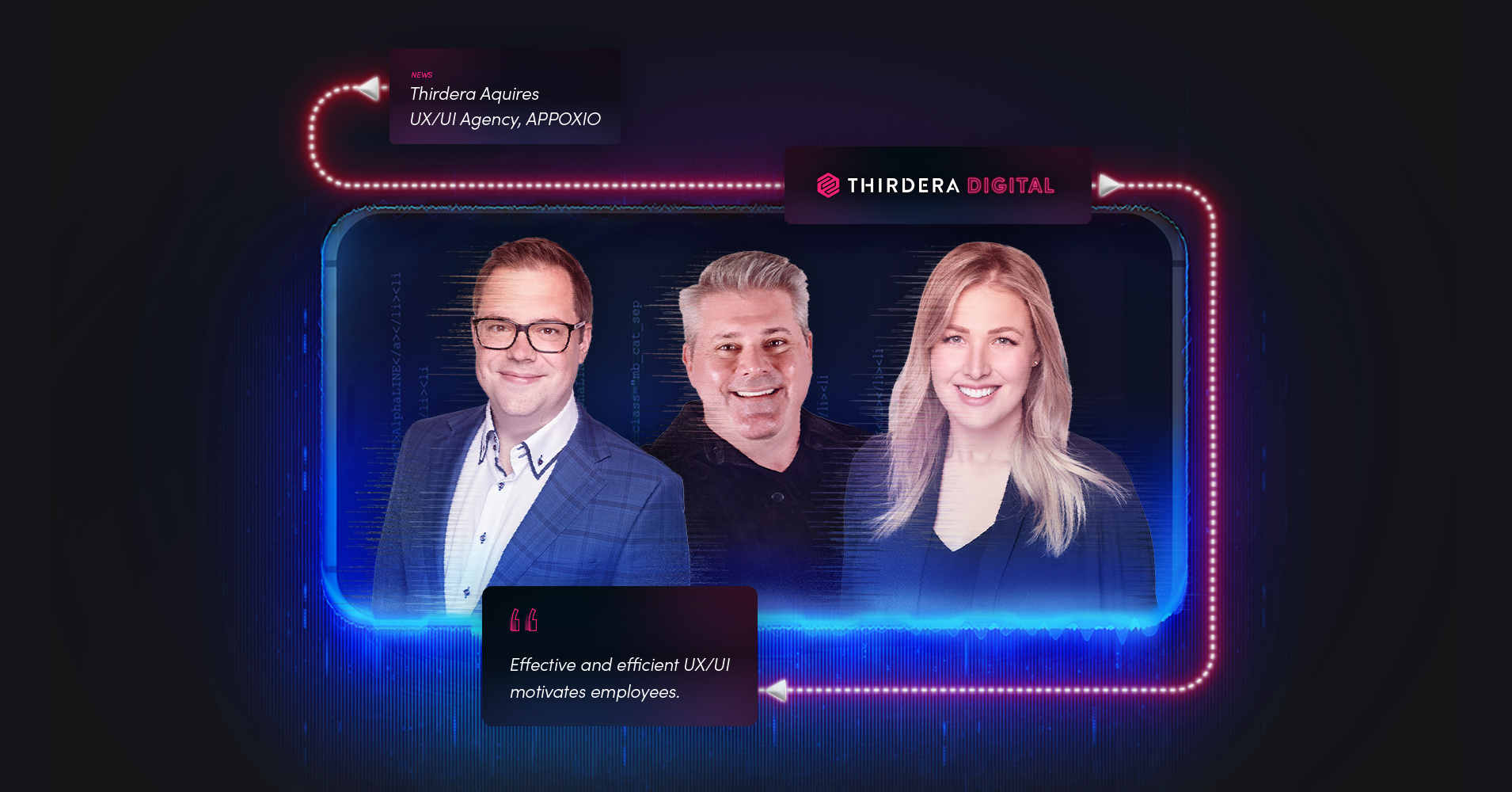
On September 22, Thirdera announced that they had acquired APPOXIO, a leading UX/UI design agency focused on ServiceNow® which will serve as the foundation for their new business unit Thirdera Digital. This move falls in line with Thirdera’s mission to establish itself as a next-generation partner in the ServiceNow ecosystem, providing clients with guidance and thought leadership on how to get more value out of the platform.
Thirdera Digital will focus on human-centred interactions, and help customers design user experiences that are intuitive, personal, and engaging. In a recent discussion, I sat down with Thirdera’s CEO Jason Wojahn, Thirdera Digital’s Sr. Vice President Frank Schuster, and Director of UX/UI Breanne Creelman, to discuss why design is an essential element of the ServiceNow journey, and how Thirdera Digital or “3D” stands out as a leader.
Jason Wojahn: “I often think about how (ServiceNow CEO) Bill McDermott refers to ServiceNow as the “platform of platforms” or the “control tower of the enterprise.” Many of our customers are trying to transform and modernise the way they work. ServiceNow provides the ideal way to achieve this as a platform to automate and aggregate work, digitise, deliver consumer-like experiences, and improve time-to-value. In some cases, it's within the platform, in some cases outside of the platform where ServiceNow can be used to drive connected workflows across the enterprise. Bringing these experiences together creates an opportunity to work smarter in a more agile and connected way. ServiceNow provides a platform of capabilities that can scale in alignment with those needs and allow businesses to innovate. With these capabilities, it becomes even more important to deliver truly engaging experiences.
Truly engaging experiences are intuitive and efficient. Intelligent design creates intuitive and efficient ways of working, which increases user adoption and engagement. If you can achieve high levels of adoption and user engagement, then you create better user value/satisfaction and ultimately a better return.
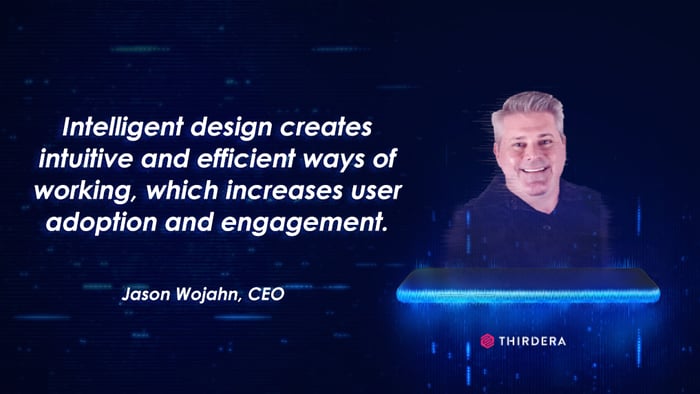
Frank Schuster: “UX/UI has always been important, but in a technology-driven world where people are used to the experiences that they have on their personal devices, UX/UI design is crucial.
In the ServiceNow world, very recently, having an intuitive or efficient interface was considered going above and beyond the regular scope of a ServiceNow project. There's so much focus on workflow and process automation, but not necessarily the UX and UI that everyone - customers, employees and vendors alike - will use to interact with all those powerful ServiceNow modules. But today, it's almost the minimum expectation. Everyone wants that. What many companies are finding out is that it's not very easy to do. Those experiences are tailored using a specific skill set that focuses on how people react to and interact with technology and anticipate what they'll need, even before they know they need it. When you add the ServiceNow layer on top of that, the need for that specific expertise, there's really no one out there like Thirdera Digital that can enable that level of experience for ServiceNow customers.”
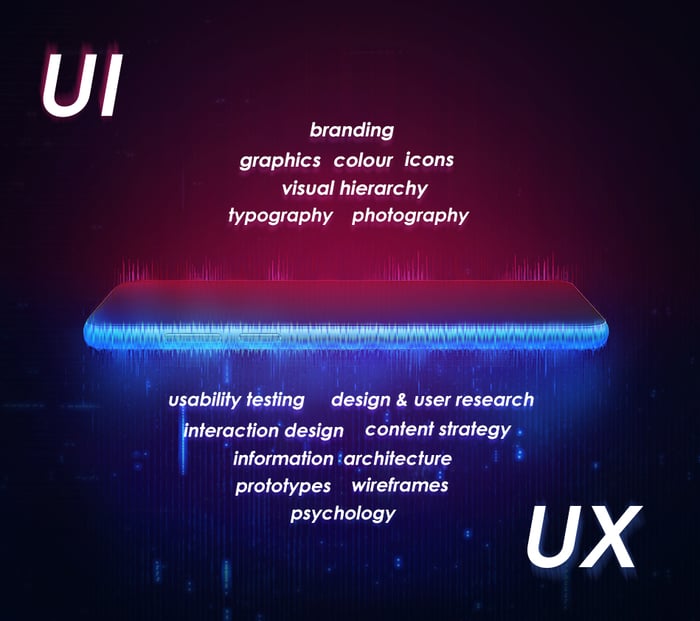
Jason Wojahn: “People often have the connotation that design means that something is beautiful or artistic, and largely the discourse around experience in ServiceNow UX/UI configuration is often oversimplified to ‘pretty portals.’ That’s not what we mean when we talk about design and how it relates to user experience.
When you think about online retailers that have a great customer experience, you’re not always talking about how pretty the website is. In fact, many of those things that create a great customer experience are barely perceptible, because retailers obsessively designed a frictionless experience. Their customers don’t need to be trained on how to navigate these portals.
This type of experience is what our customers think of when they envision better ways of working at work. Somehow, that's never effectively translated because there’s a depth of skill required that many customers don’t realise. So, when we’re talking about design, we're talking about meeting customers where they are to create excellent designs and align with the experiences that they want to create for their employees to achieve better efficiencies.”
Breanne Creelman: “I think a great example of that is working with a government client. They certainly aren’t looking for anything flashy, but the data is so extremely important. And there’s a variety of demographics to think of, like senior users, where there can be so many roadblocks to get them on a computer, to get them to use technology, and to get them to put in their personal information. The challenge there is often earning the user’s trust, and we must earn that trust through the design.
That trust is more important than something that looks cool or something that they haven't seen before. Sometimes, we get brought in because that trust has already been broken, so users are immediately sceptical of the systems that are there. In that situation, building a flashier portal will do more damage than good. That’s where we come in to understand the mission of the customer, and how to design the right path to get them there.”
Frank Schuster: “We sit down with our clients to understand what their users really want and what their current pain points are now. This goes way beyond simply asking for their brand guidelines and producing something that’s eye-catching. We get involved using various research components and get to know the different personas, what kind of information needs to be considered, and how that information is supposed to flow. We get all these kinds of things before we start putting any kind of pen to paper or even doing a wireframe. If you don’t actually know what you're trying to solve, you're not solving anything. One of the worst feelings for a customer is going through a project, getting a sleek new portal, and you still can’t do those 5 or 10 things you wanted to do when the project started.”
Breanne Creelman: “An important component of UX is of the technology, but there needs to be a focus on empathy, storytelling, and the design ethics that I think are key for our customers. They want to know how their design decisions will affect users, and that’s a process that involves testing assumptions and sharing what we’ve learned. It also means going beyond the common users and the stakeholders so that you create a solution that works for everyone, and not just IT’s understanding of what users should be doing. It’s a human-centred approach that meets the customer where they are and allows emotions and behaviour to guide the technology, not the other way around.”
Frank Schuster: “The skill involved in building the technology and creating a portal is still extremely important for the success of these projects, and we certainly have the team to do that part very well. However, there are several UX-related vehicles that many ServiceNow customers don't see very often, such as A/B testing, card sorting, user interviews etc., that are so important for understanding how we need to design the user experience. This can have a big impact on how we approach that customer’s portal, and we can see the impact on that from the satisfaction level of our users.”
Breanne Creelman: “With our approach, user experience starts at the beginning with everyone involved in the project. We're not siloed between our technical team and our designers, so we don't throw something over the fence and have to cross our fingers that it comes back well. Our technical team is engaged on the calls and they’re just as involved in the design and user experience. Having open communication channels and talking through the process gets them excited too. Everyone wins when we create an advanced design that ties into a maintainable and flexible back-end solution, which will help our clients manage their portals on their own, without needing to bring us back for every change.”
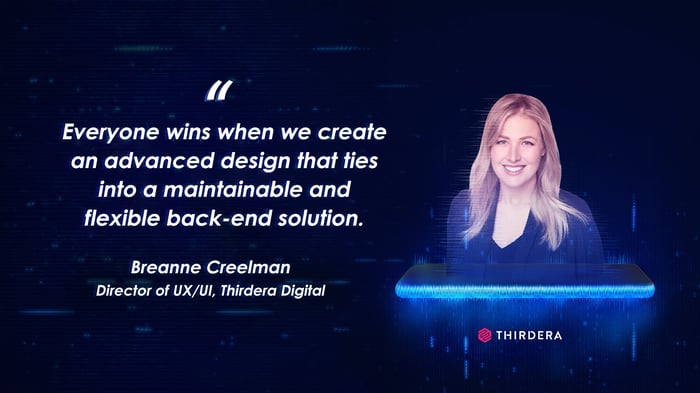
Jason Wojahn: “It’s also important to note that we’re committed to keeping these solutions inside the ServiceNow platform, without selling or "bolting on" additional software to bridge perceived gaps. In the long-term, it's expensive, creates dependency, impacts platform upgradability, and causes a lot of extra work.”
Frank Schuster: “That’s always been really, really important to us and something that a lot of our clients have brought up as important to them as well. Additional products need to be maintained, licensed, and upgraded regularly. That's just one of the reasons why companies use ServiceNow; so they don't have to take care of the tech stack. Suddenly, you have a second tech stack that's just as important to your solution as ServiceNow itself, which is why we solely design for & build our solutions on the NOW platform.”
Frank Schuster: “For a long time, ServiceNow clients have historically used ServiceNow for IT purposes, and as such are using an IT approach with a traditional interface that is as close to out-of-the-box as possible. We’ve seen firsthand that customers are eager to motivate their users to interact within the platform and create an experience that’s bigger than IT. Users want to visit a portal or page where they immediately understand the purpose and can smoothly navigate around it. They want something that feels familiar and resonates with them on a personal level.
Every company has its own unique users, so it is important to fully understand their user personas and to put the needs of the users in front of the technology. This creates trust and builds empathy which then allows the company visibility to bottlenecks and stimulates employees to engage further within the platform.”
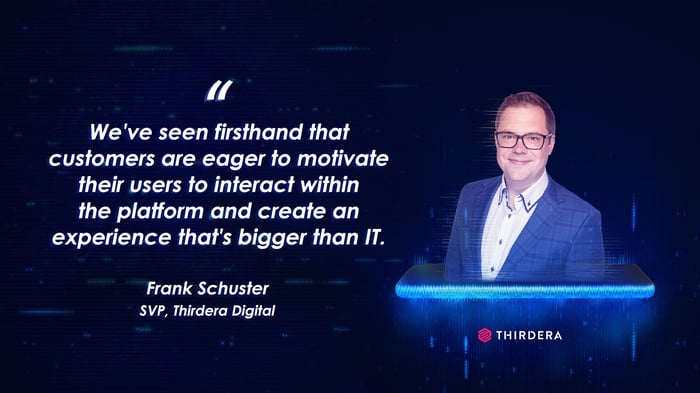
Breanne Creelman: “Productivity is hugely important for ServiceNow users. Effective and efficient UX/UI motivates employees, creates smoother workflows, and helps users focus on important information without resistance. I think ServiceNow users are actively seeking that level of engagement. Designing UX/UI that is created with that level of intention can guide users towards a particular action and be tailored for a specific experience. We’ve seen that design can impact someone’s life and the task should not be taken lightly, which is why having the resources to guide our customers through that journey is essential.”
Jason Wojahn: “At Thirdera we want to be known for and seen by our customers as their highest value enabler within the context of ServiceNow. What's great about Thirdera Digital and Thirdera as a whole is that we're bringing new ways of working to our customers, which is going to generate the most value for them, their employees, and their customers.”
Follow Thirdera on LinkedIn for more exciting updates!
We are excited to announce that Thirdera, a Cognizant company has been elevated to Global Elite status - the highest level of partnership recognition within the ServiceNow Partner...
Read MoreThirdera, a Cognizant company, and Global Elite ServiceNow partner, is excited to announce the launch of our newest retail industry capability - Stores 360. This comprehensive...
Read MoreServiceNow Workflow Data Fabric is something we’re very excited about in 2025 - so much so that it made our 7 ServiceNow Trends to Watch in 2025 report. Its potential to transform...
Read MoreMapping business processes to ServiceNow flows is a cornerstone of aligning technology with strategic objectives – e.g. enhancing efficiency, ensuring compliance, and driving...
Read More